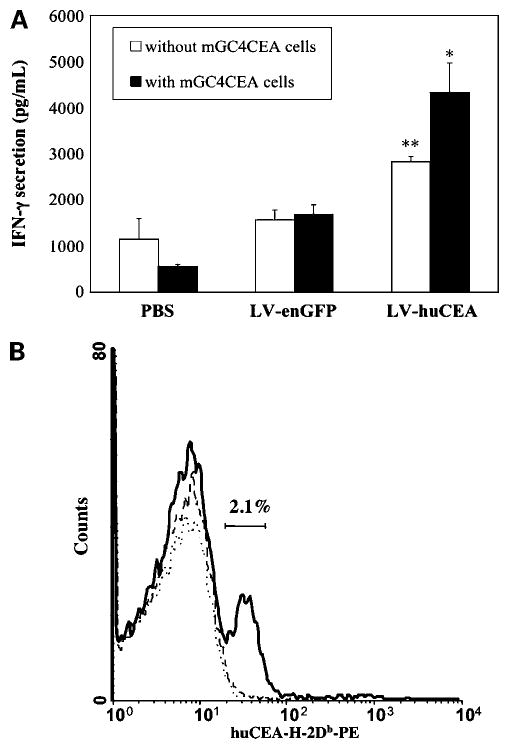Figure 4.

Direct immunization with LV-huCEA induces a huCEA-specific T-cell response. A, specific quantification of IFN-γ secretion in the presence of huCEA-expressing target cells. At the end of the second tumor stabilization experiment, pools of splenocytes from huCEA Tg mice were cultured alone (open columns) or with mGC4CEA cells (shaded columns). For the cocultures, cells were cultured with an effector-to-target ratio of 20:1 and IFN-γ secretion was measured by ELISA. **, P < 0.005 compared with PBS and LV-enGFP controls; *, P < 0.05 for LV-huCEA with mGC4CEA cells compared with splenocytes incubated without mGC4CEA cells. B, immunization with LV-huCEA induces the production of a CD8+ population specific for a CEA peptide. After the second tumor stabilization experiment, pooled splenocytes from vaccinated huCEA Tg mice were stained either with an APC-conjugated anti-CD8 antibody and a PE-conjugated CEA/H-2Db-tetramer (shown here) or with the matched isotype controls (flat curves; not shown). Number of cells relative to FL-2 fluorescence, gated on CD8+ cells. Continuous thick line, representative of splenocytes from LV-huCEA-vaccinated mice; thin dotted lines, staining of the control splenocytes.
